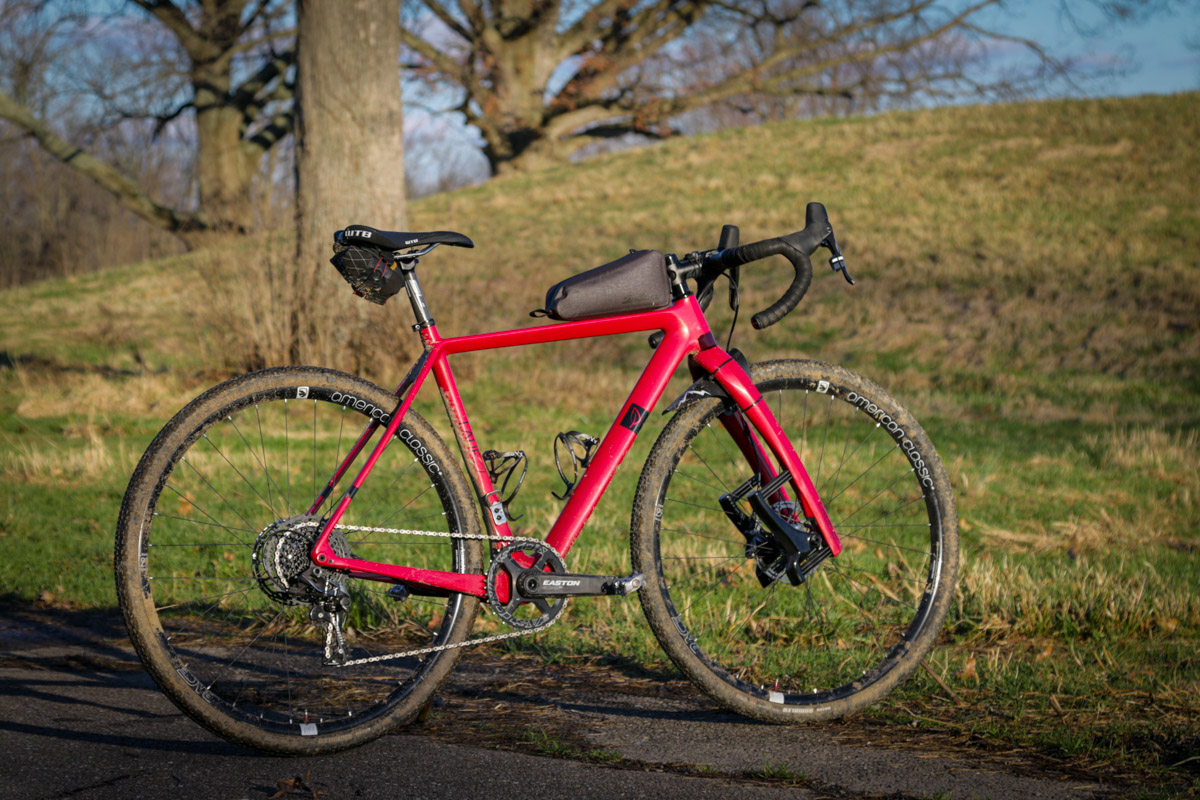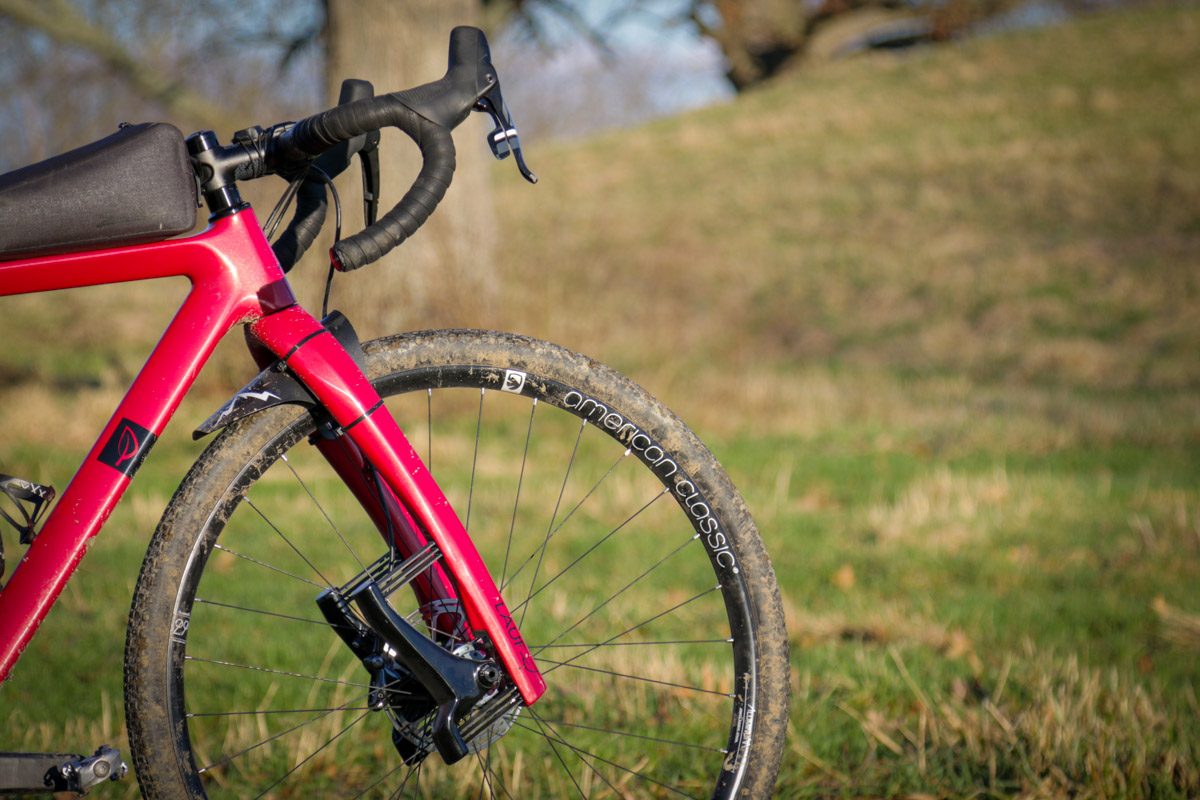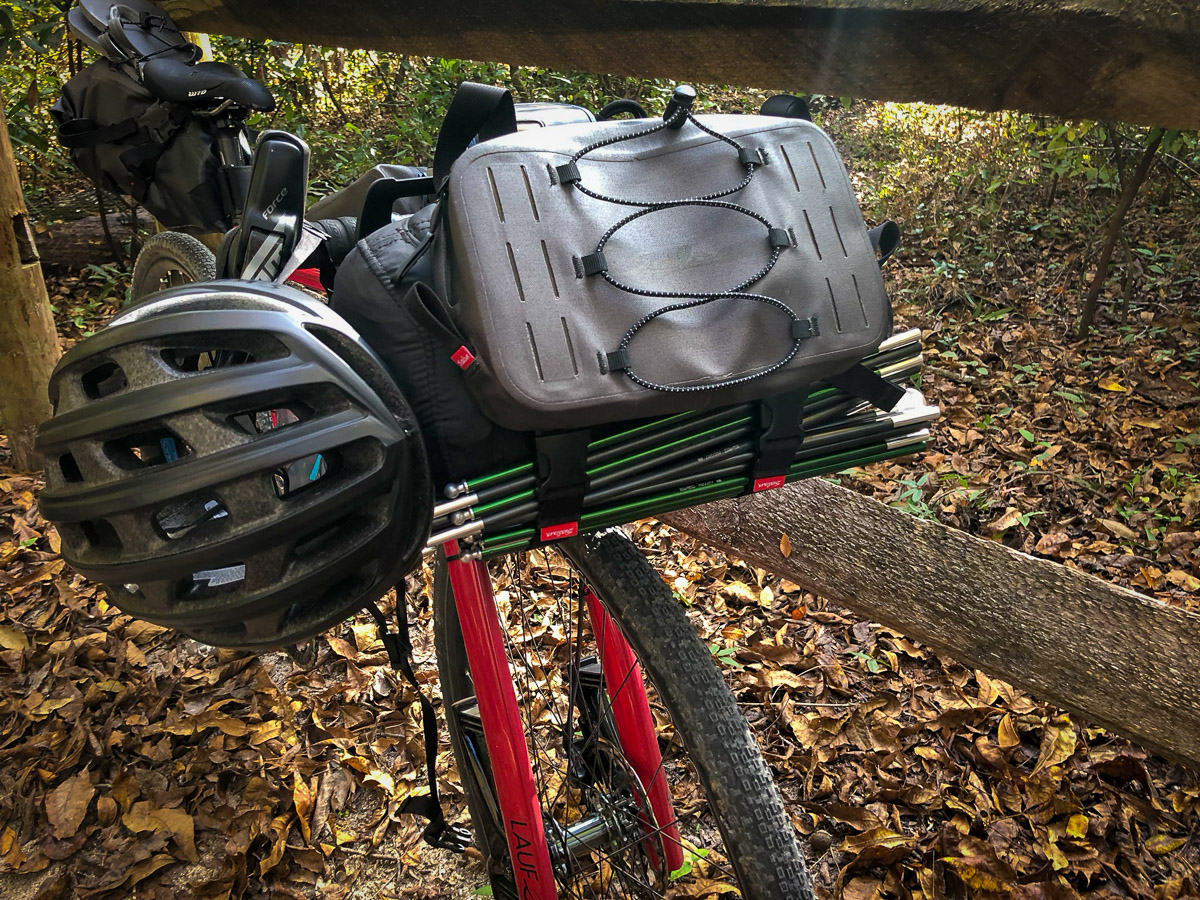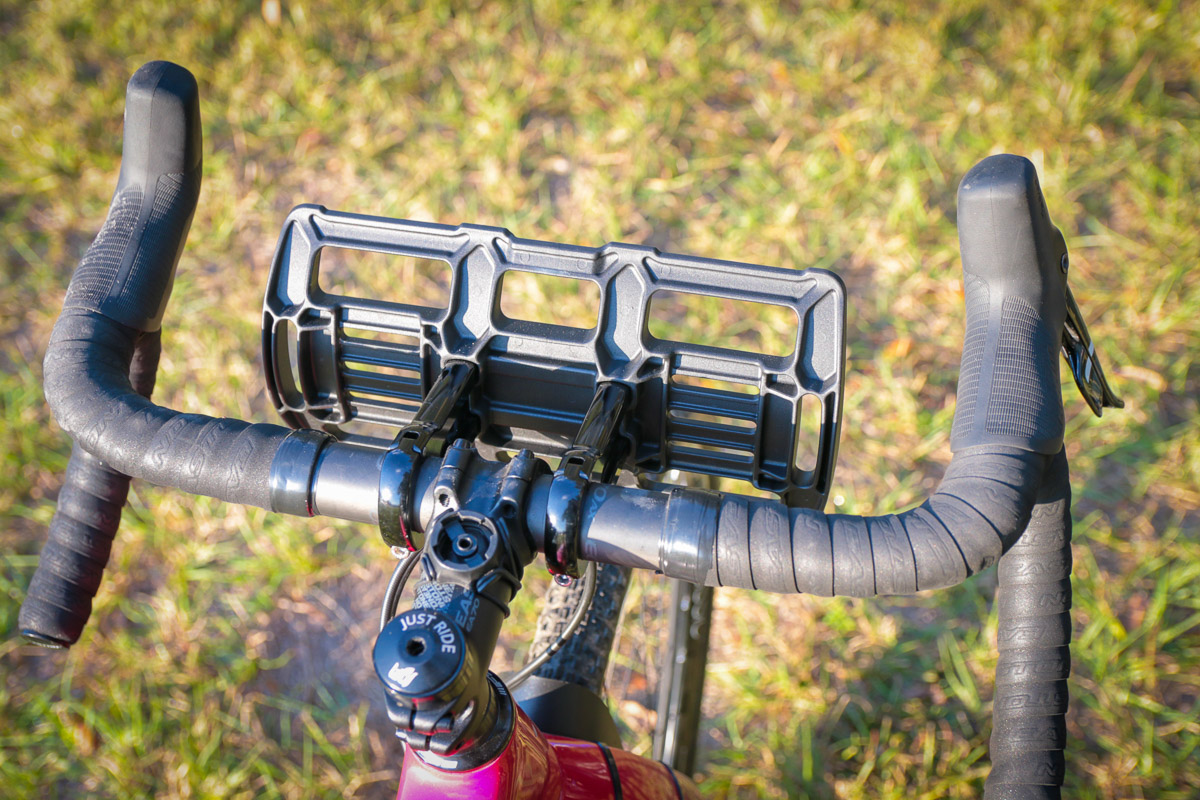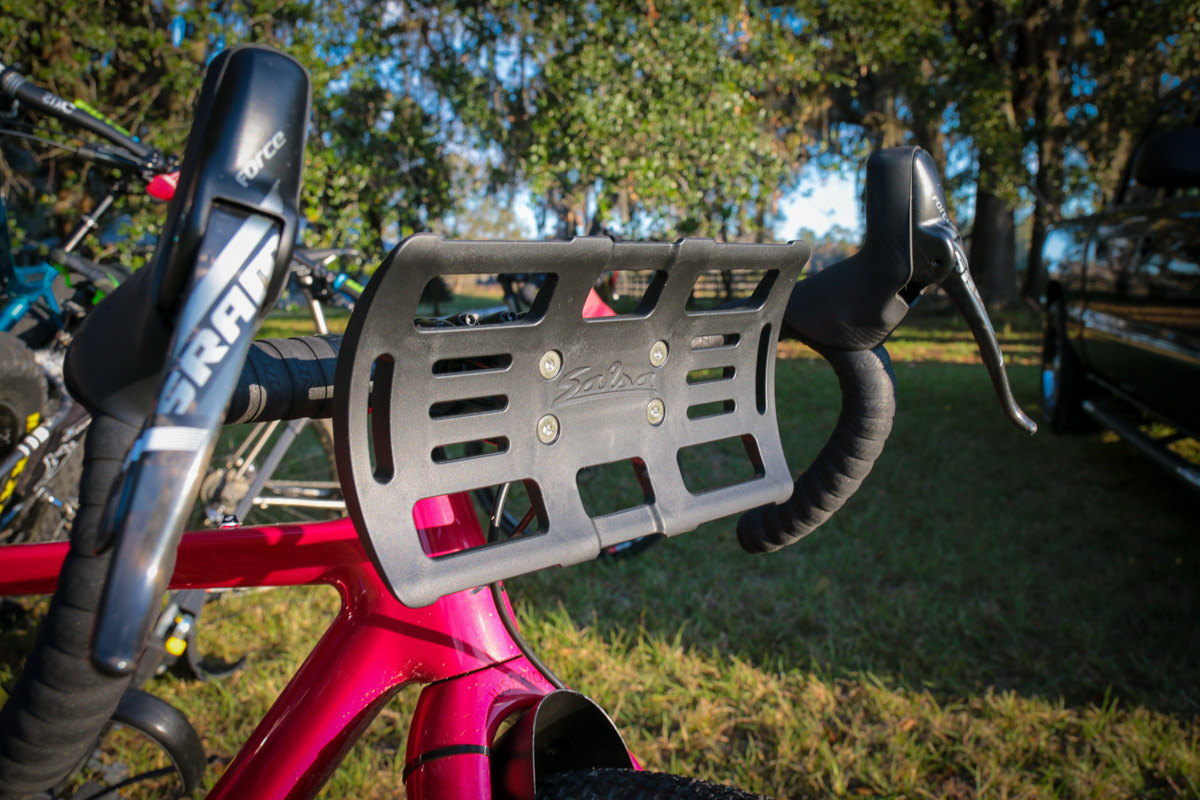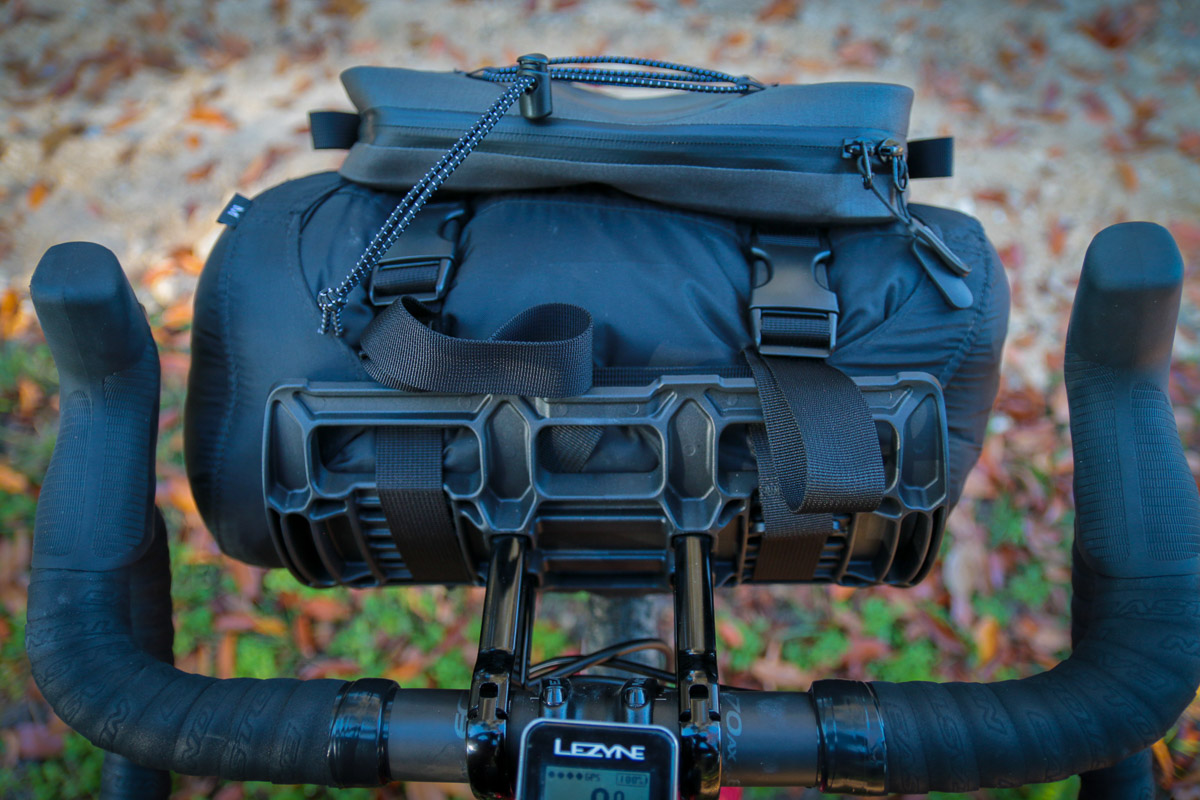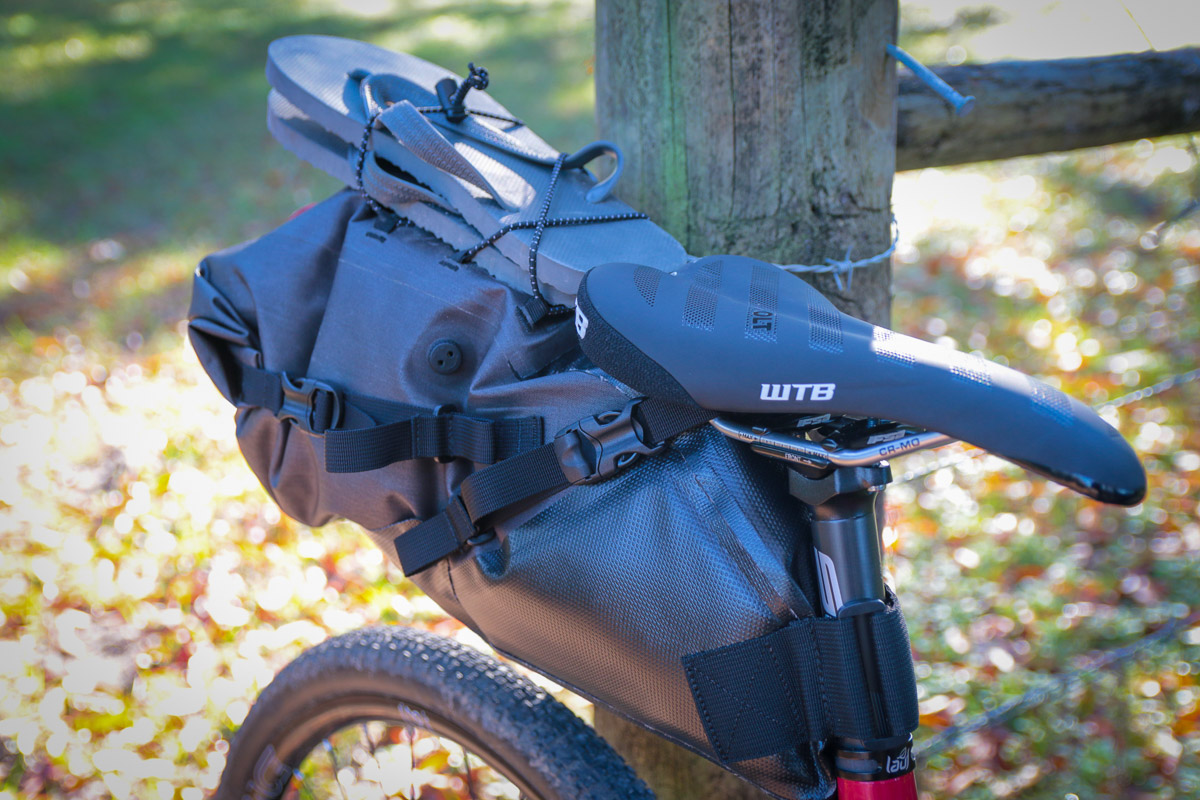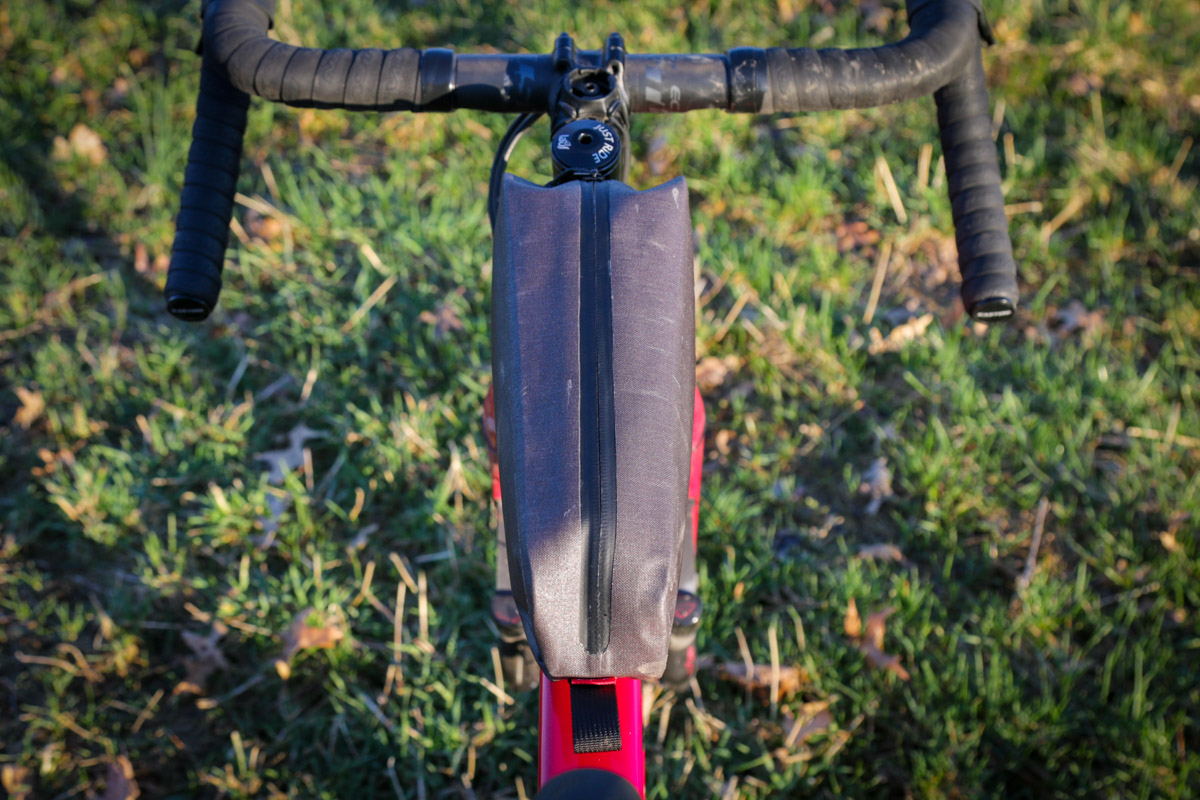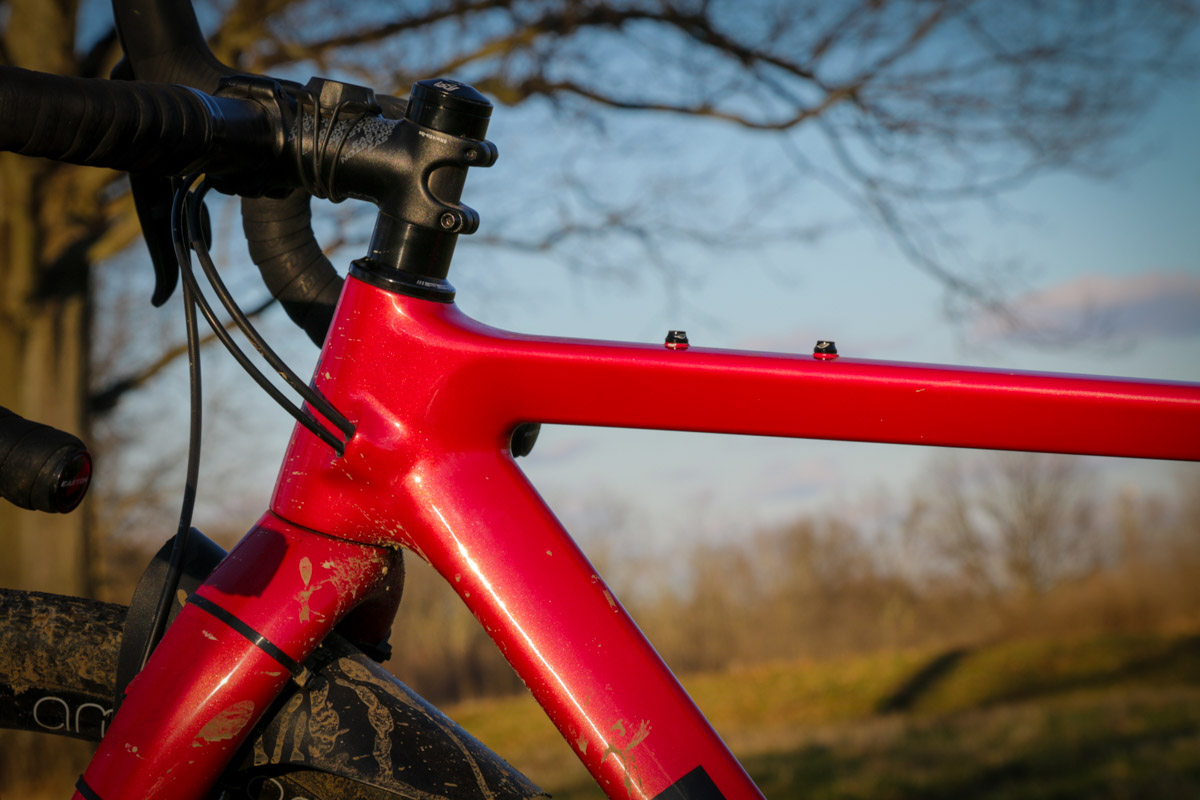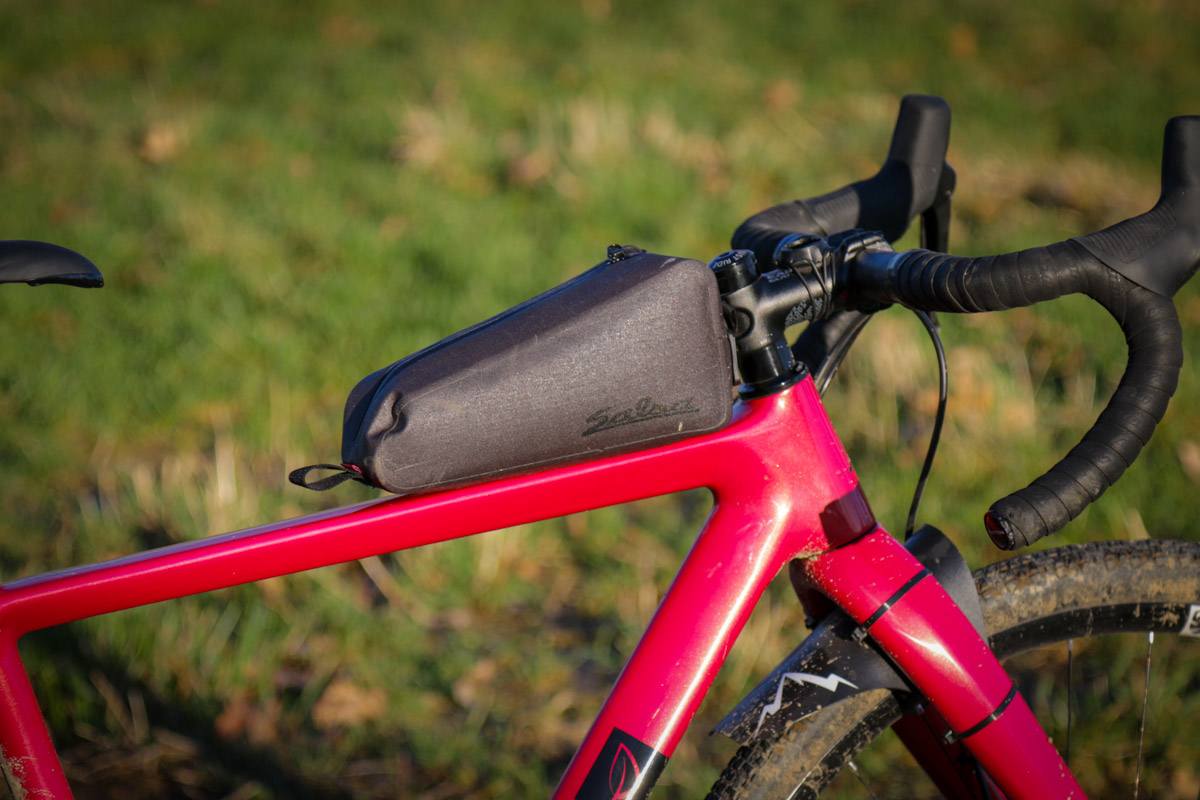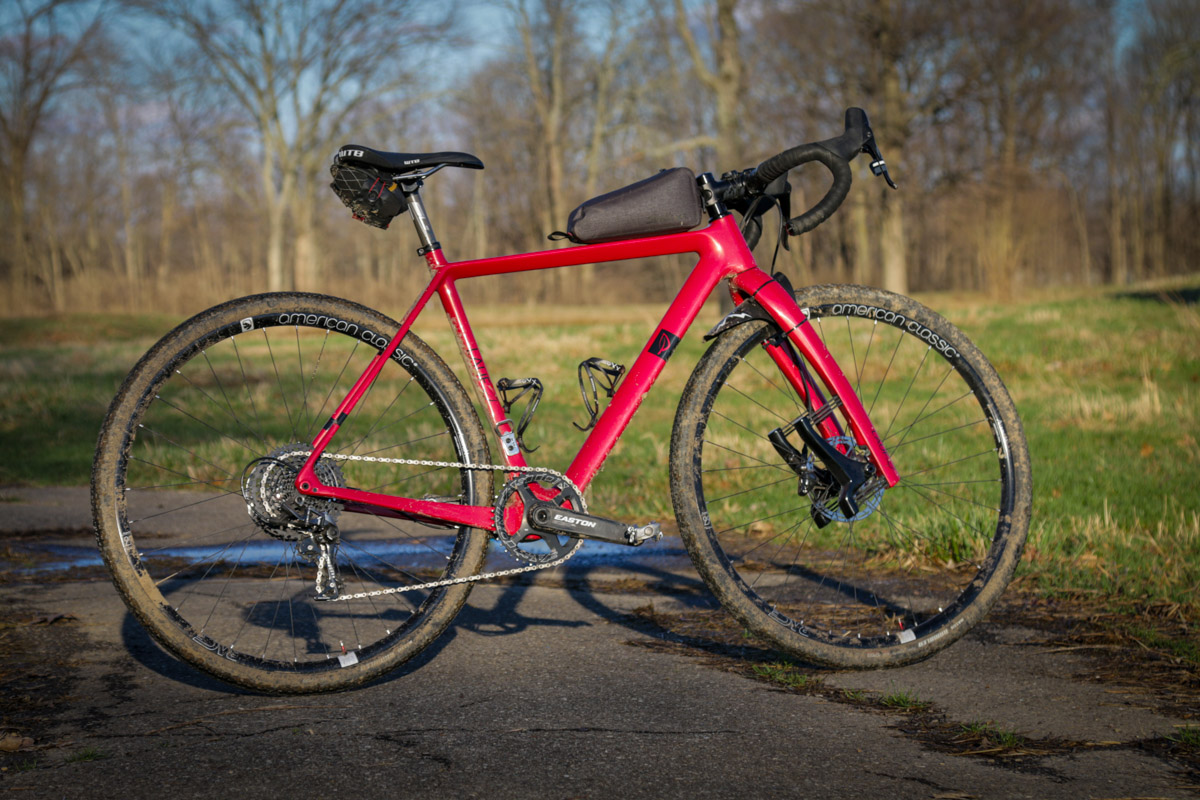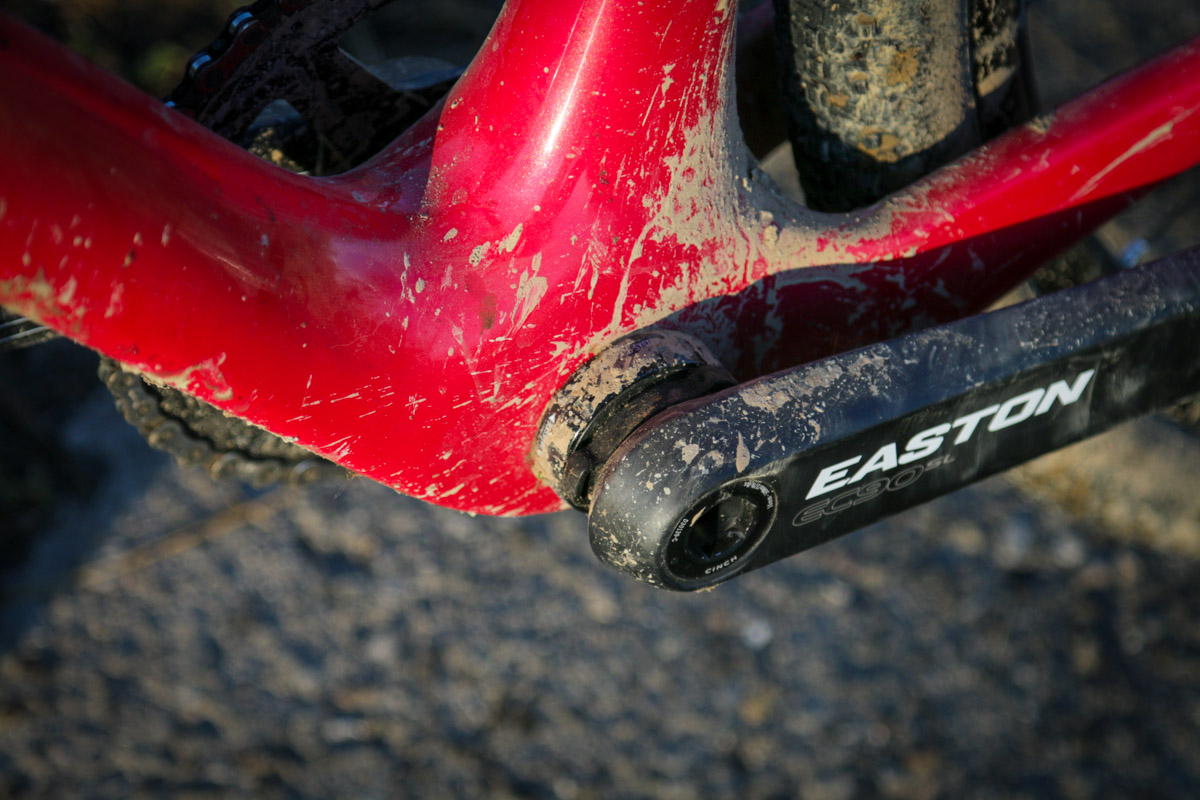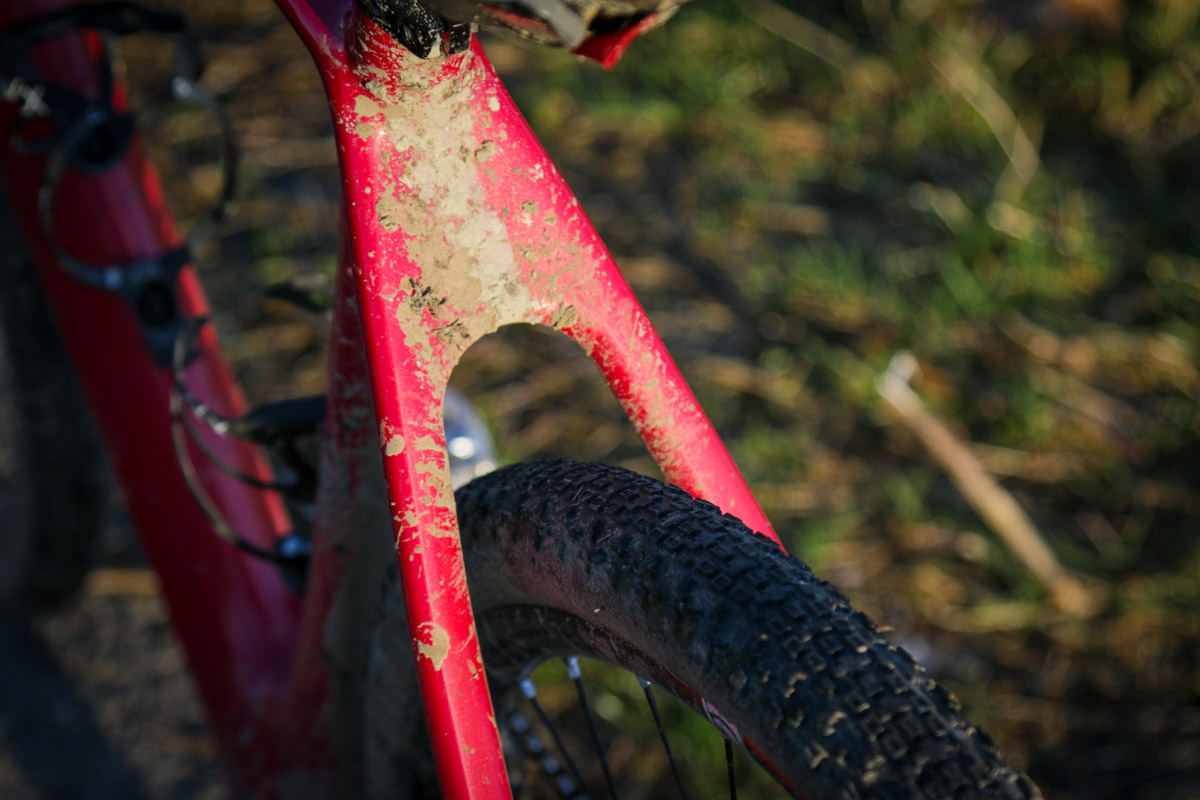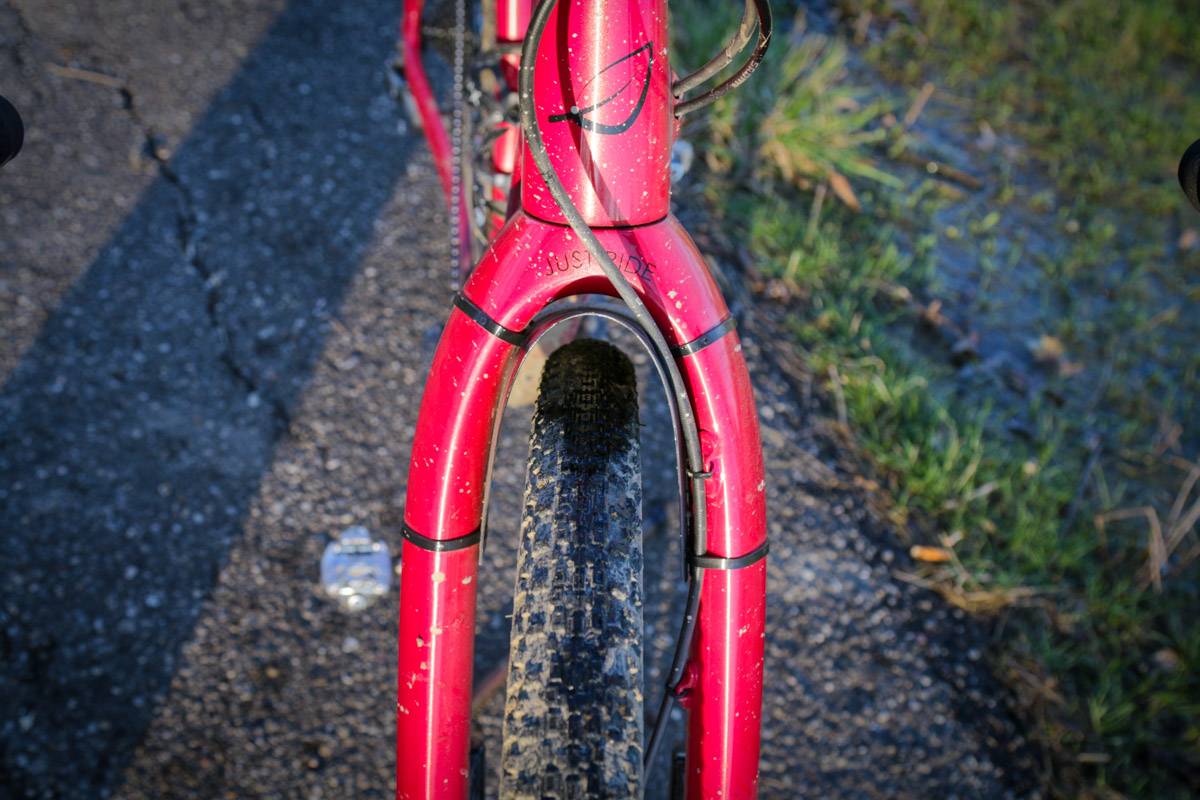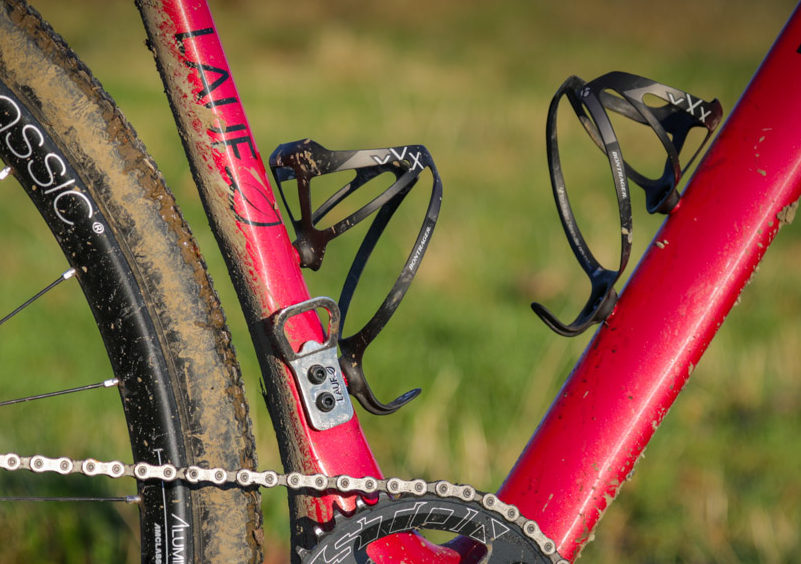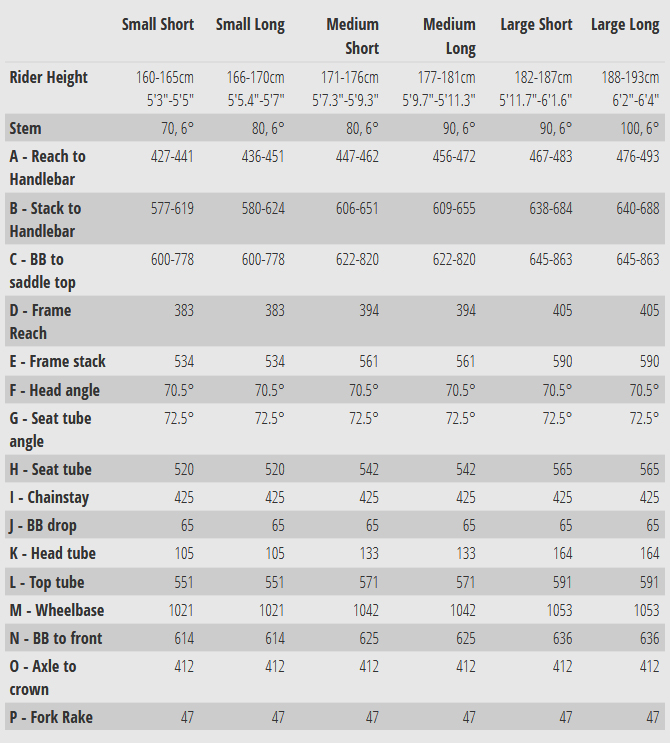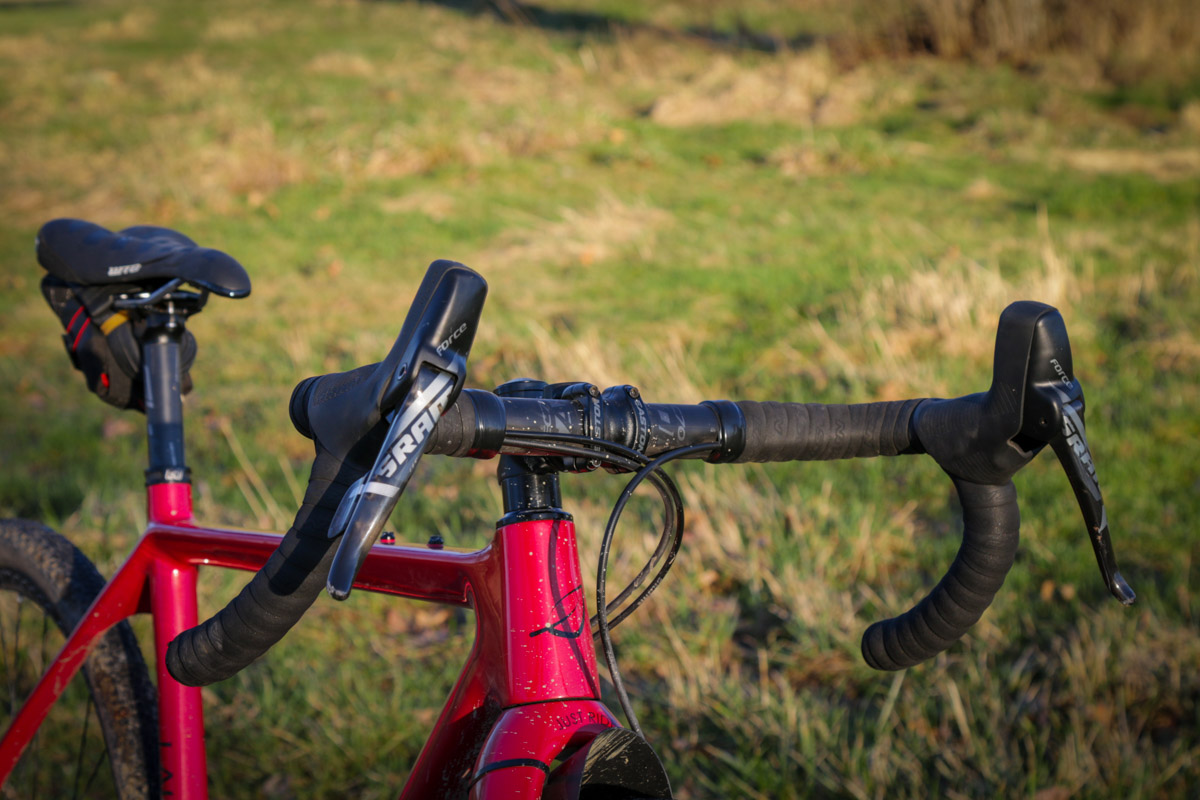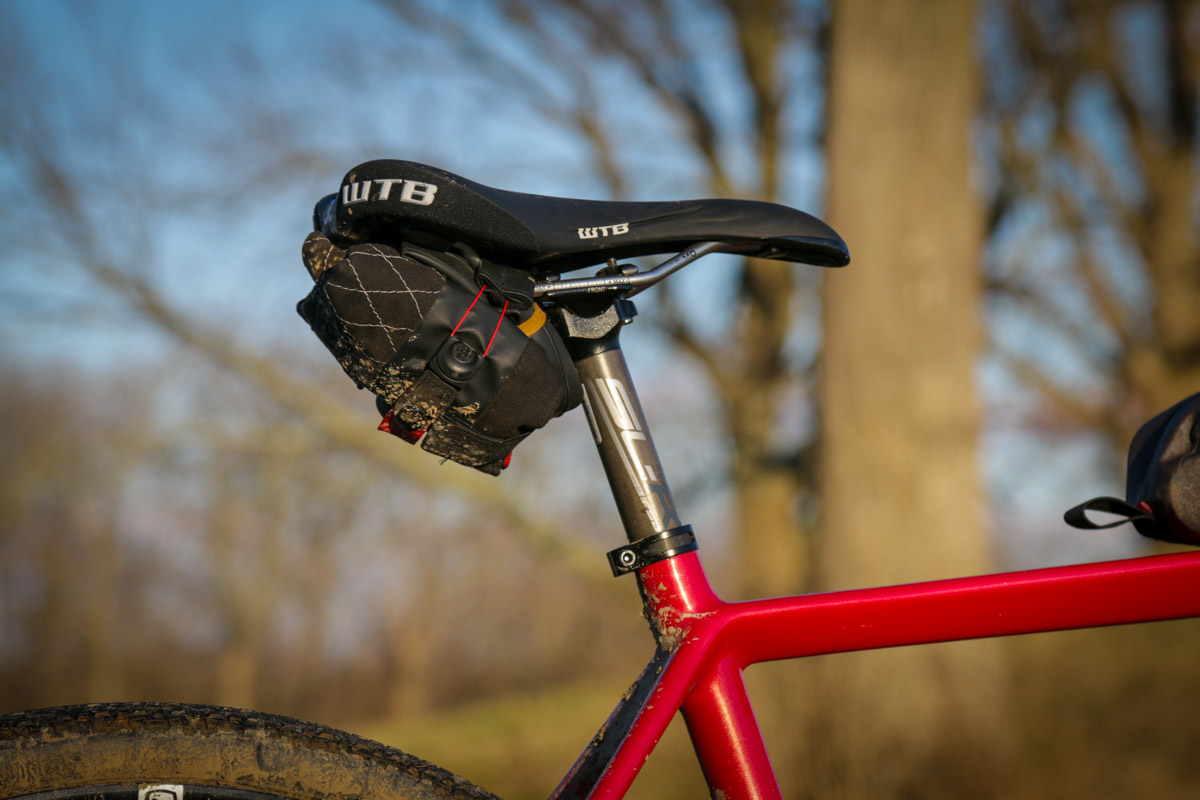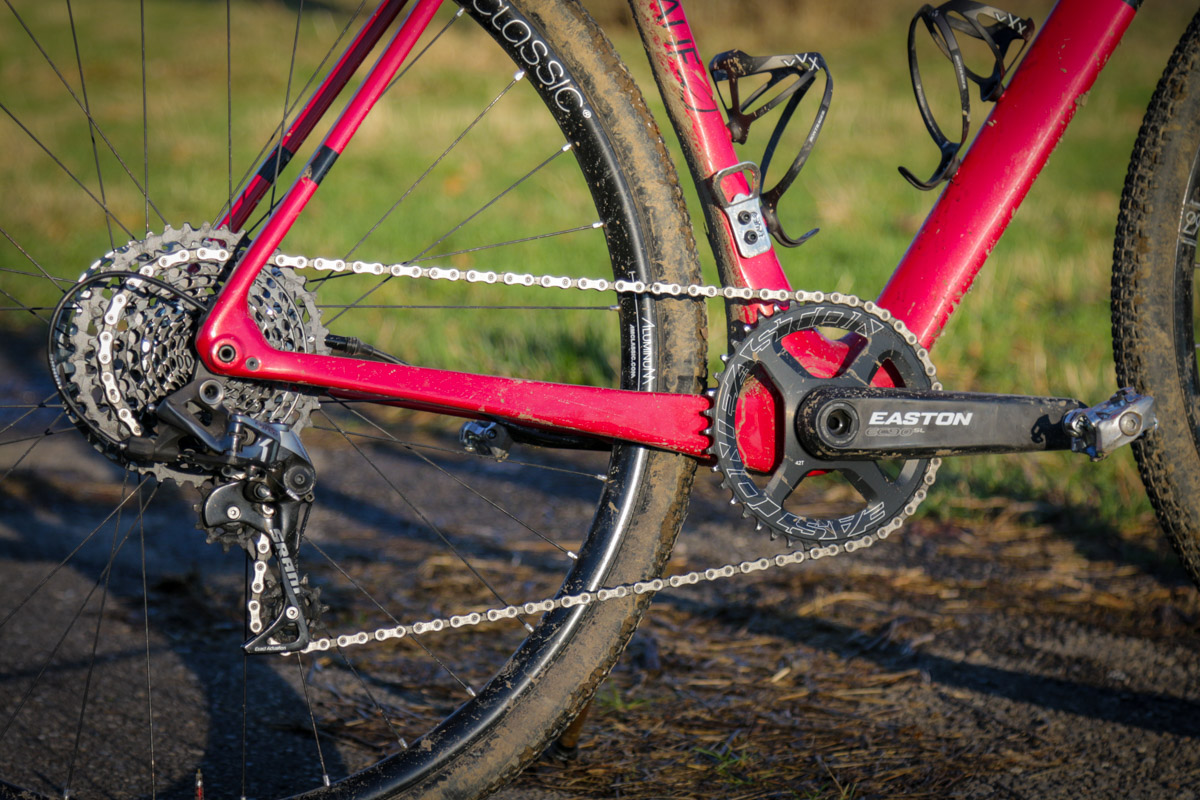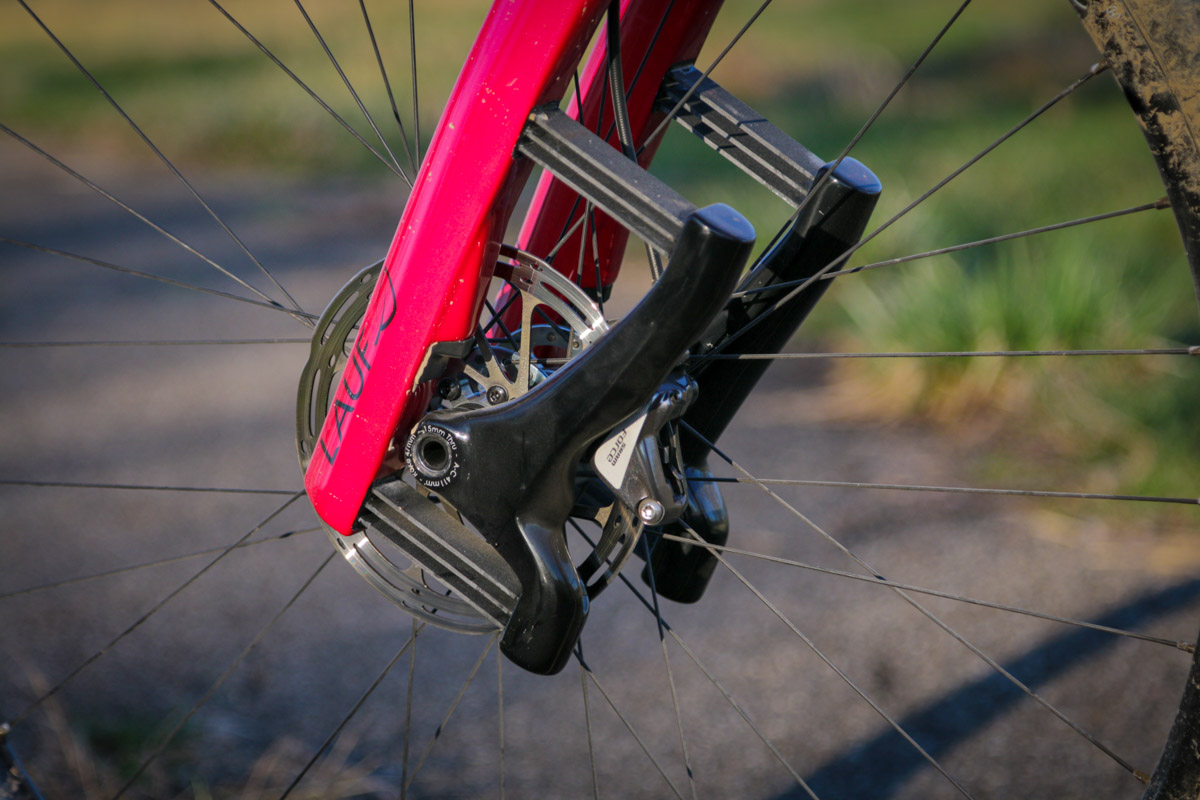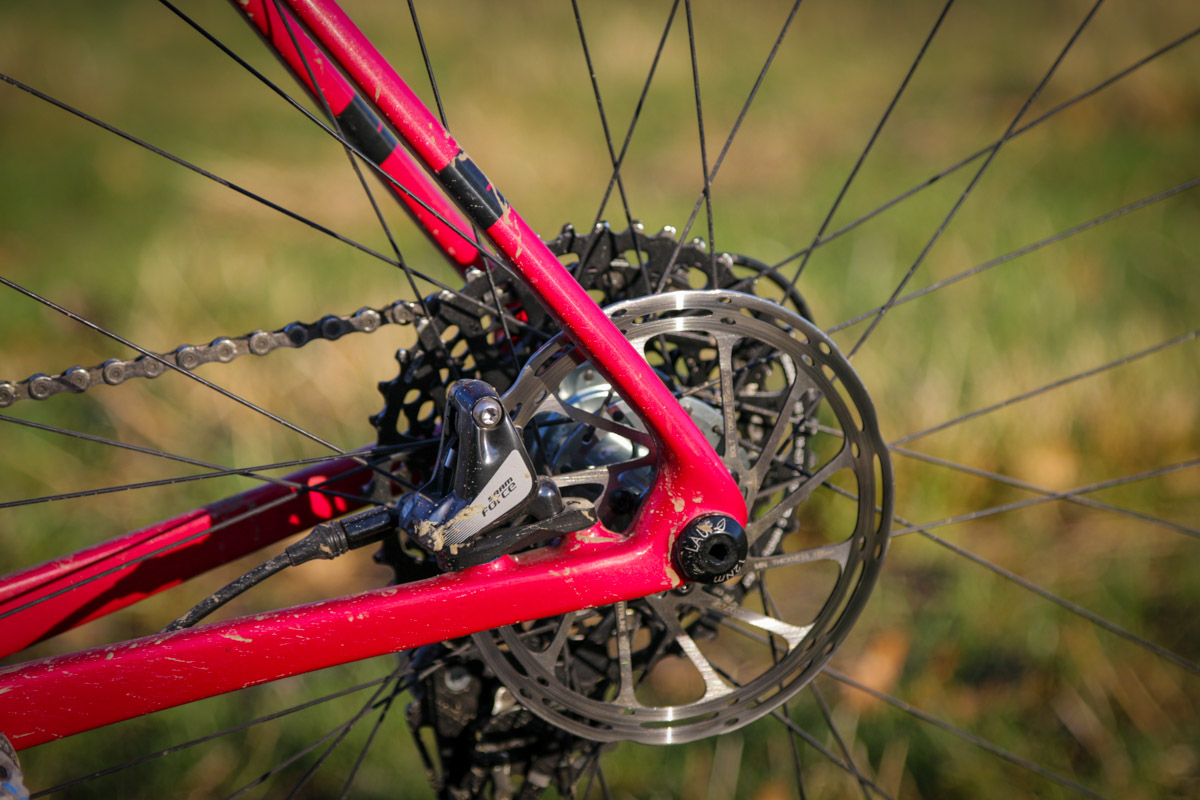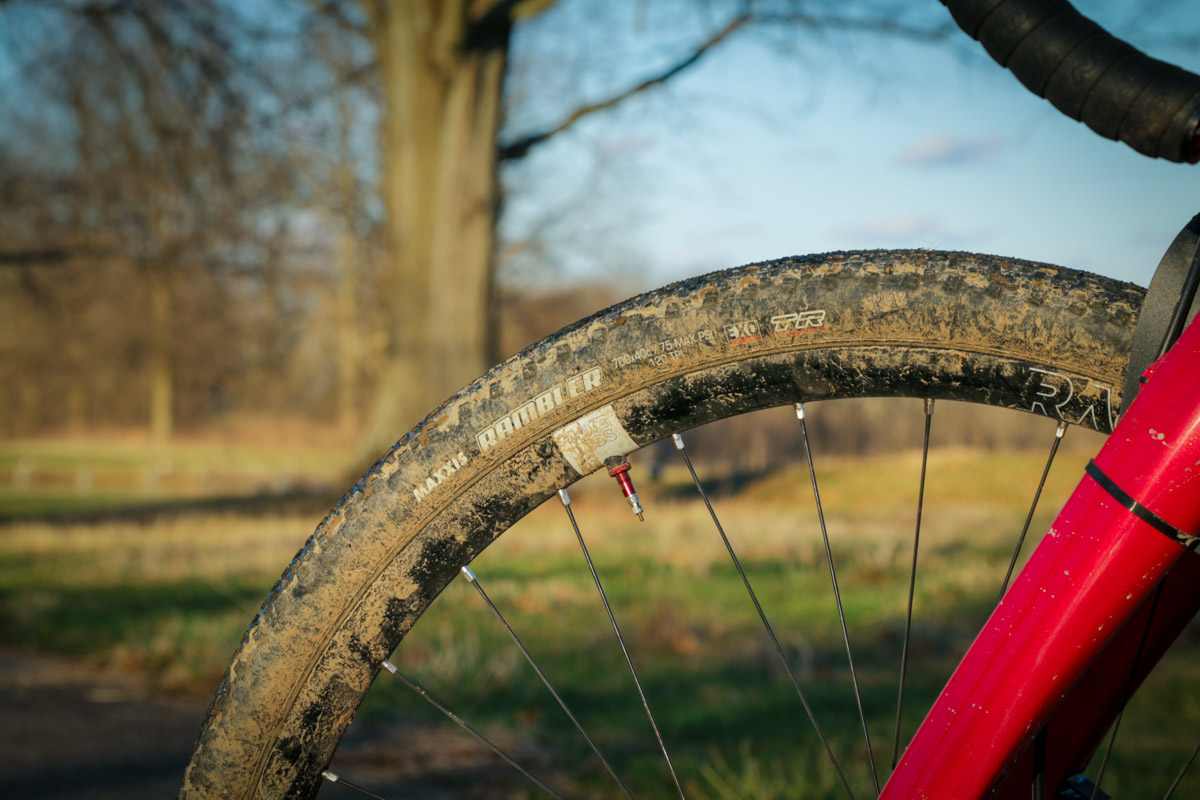The Lauf True Grit has quite a different development story than most gravel bikes. For those unfamiliar with the brand, Lauf actually started out with their carbon leaf spring forks. First for mountain bikes, and then for gravel and fat bikes. Since then, the Lauf forks, the Grit in particular, have gone through quite a few changes and improvements in both performance and looks.
With the fork dialed in to their liking, it was time for the next step. While most bike manufacturers try to figure out what fork to spec on their frames, for Lauf – it was what frame to spec for their forks. That, and the rest of the build. The result is the Lauf True Grit. A carbon gravel bike purpose built for the Grit SL suspension fork.
It may seem like quite a leap for Lauf to jump right into complete bikes, but it’s clear from their suspension forks that they know their way around carbon manufacturing. And what better way to highlight your fork than with a bike that is tailor made to run it? Fortunately, the True Grit turns out to be quite a bit more than just a support structure for the fork.
Upon receiving the True Grit for review, I barely had enough time to build it up, let alone break it in. Fortunately, the build took hardly any time at all – and that’s coming from a guy that was trained to absolutely stress the details of any bike build. I was very impressed with the initial build out of the box on a brand new bike. If Lauf can keep this up for all of the bikes they sell, that alone will be a selling feature. Just a few days after the build up, the bike was on the back of my car as we headed down to Florida for the Rocks, Roads, and Reggae gravel event.
Honestly, the ride wasn’t that strenuous, but any time you jump on a bike you’ve barely ridden for a big event, you’re gonna learn some things. Just shy of 120 miles between two days, the ride took us through plenty of sandy, rough, rocky, wash boarded, and rutted roads to get a good feel for the bike. The ride was immediately impressive. Sure, big tires and a suspension fork will go far in hiding the ride of a bad frame, but you can still tell. Every time I get off the True Grit, I just don’t feel as beat up as I feel like I should.
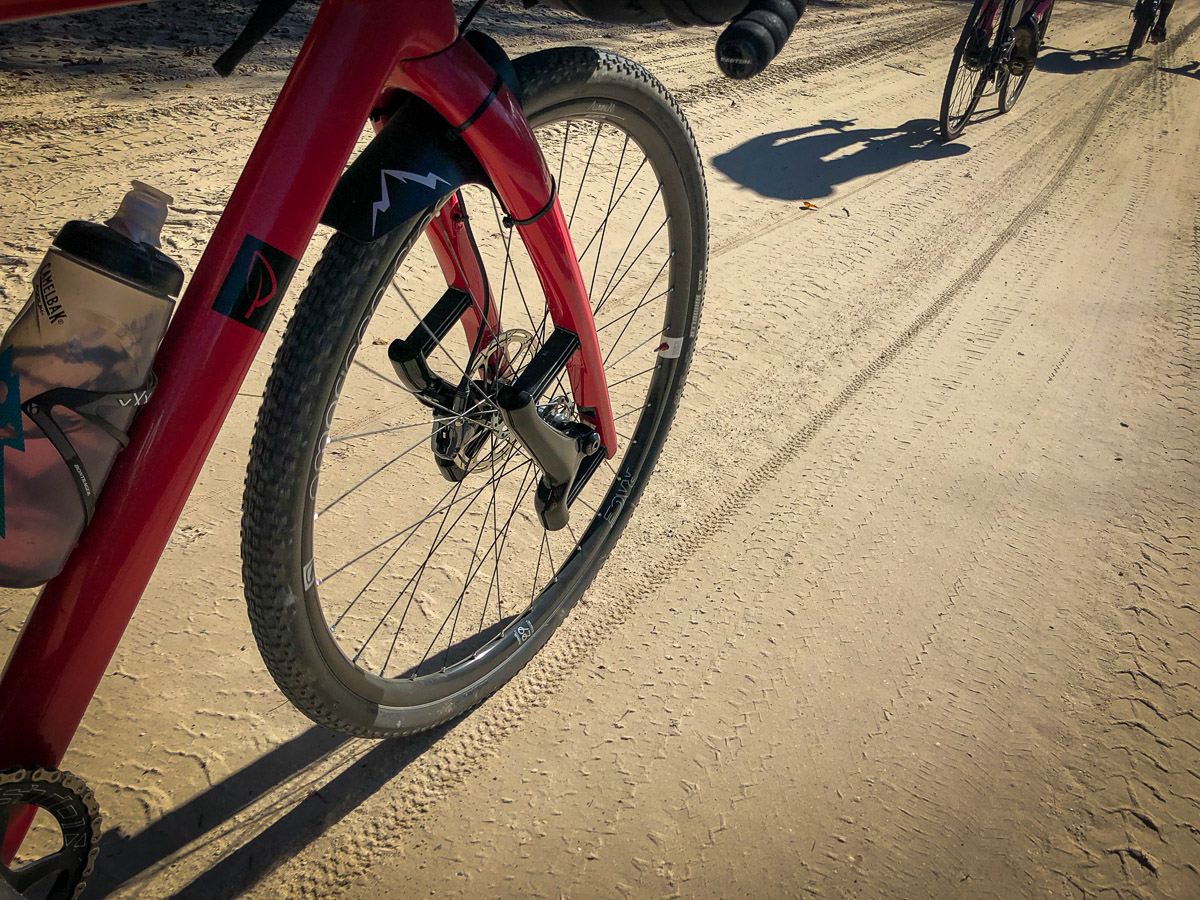
About that fork…
When it comes to the fork, I came to a realization on one of my last rides. It’s gotten to the point where I don’t notice it at all. In a good way. It may have taken a while to get to this point, but I’m now barely aware of the fork doing its thing – until you hop back on a bike with a rigid fork and realize just how much those little blades actually do for the ride. Part of this could be due to the improvements made to the Grit SL itself. Still offering 30mm of suspension, the new fork is lighter and stiffer while also getting a sleeker design that is less obtrusive visually. I have to applaud Lauf on this part of the design. Whereas the previous fork stood out like a sore thumb and nearly everyone commented on it, the new fork manages to blend in, only revealing its secrets on the second look. The two tone paint with the frame color match certainly helps.
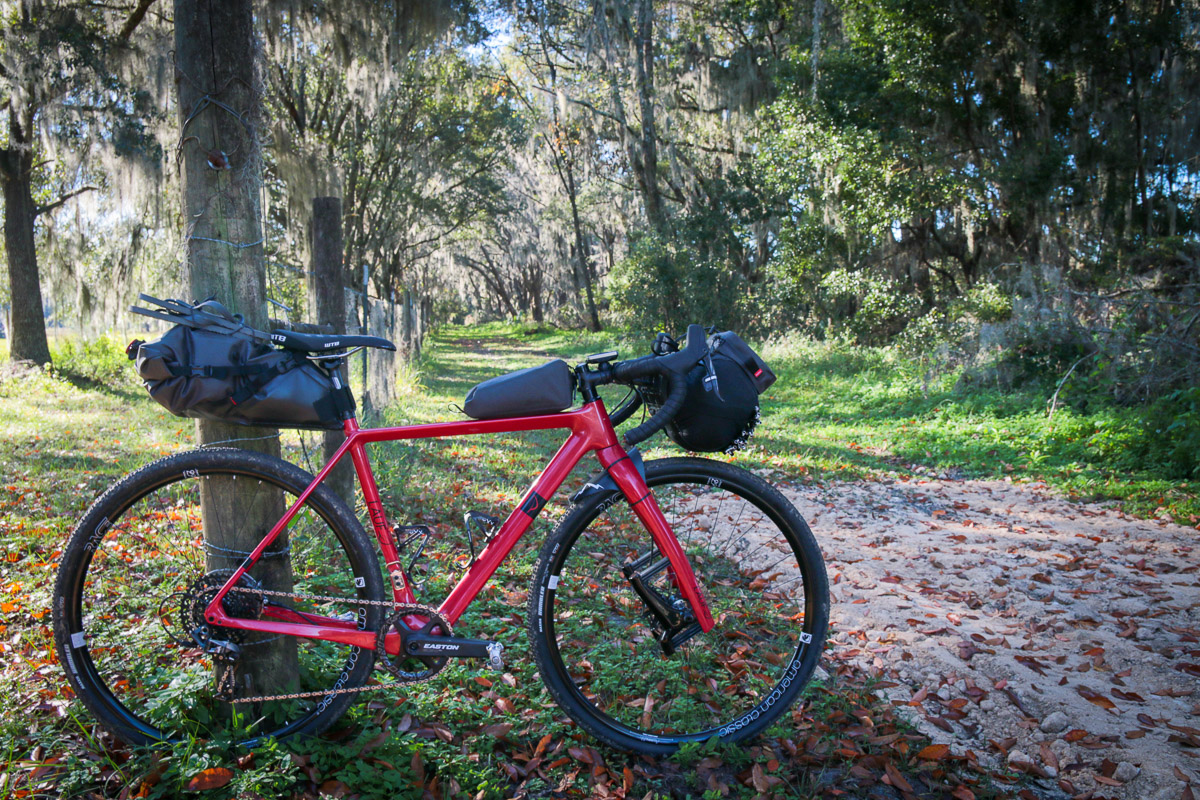
Baggage
The only time I wasn’t completely stoked on the Grit SL fork was when my handlebars were loaded down with bikepacking gear. Placing all that weight out in front of the handlebar made for unwieldy handling at times but it could probably have been solved with better packing. Part of my issue is that as a small guy on a Small-Long bike, there isn’t a lot of room between the bars and the front tire to keep the bag from rubbing thanks to the short head tube. That results in the load being cantilevered out farther over the front hub to keep it from rubbing the front tire. This isn’t a Lauf specific problem, just an issue with small frames and bags in general.
However, the Grit SL fork does lack the ability to carry any extra gear on its fork legs, so in terms of bikepacking you’ll end up packing more weight up high. I wouldn’t pick the True Grit if long distance bikepacking was my main goal, but as a bike to use for the occasional bike packing trip it worked out pretty well.
In all fairness, this was also the first time that I used a new set up with the Salsa EXP Anything Cradle which means there’s room for improvement in my set up. But overall, the EXP cradle made for a manageable set up with plenty of support for my gear and relatively easy packing.
The same goes for the Salsa EXP saddle bag and top tube bag. Both are well constructed, light weight, and fit well on a bike they weren’t specifically designed for. My only critique would be that the top tube bag is a little wide at the end closest to your knees which led to some rubbing when standing to climb.
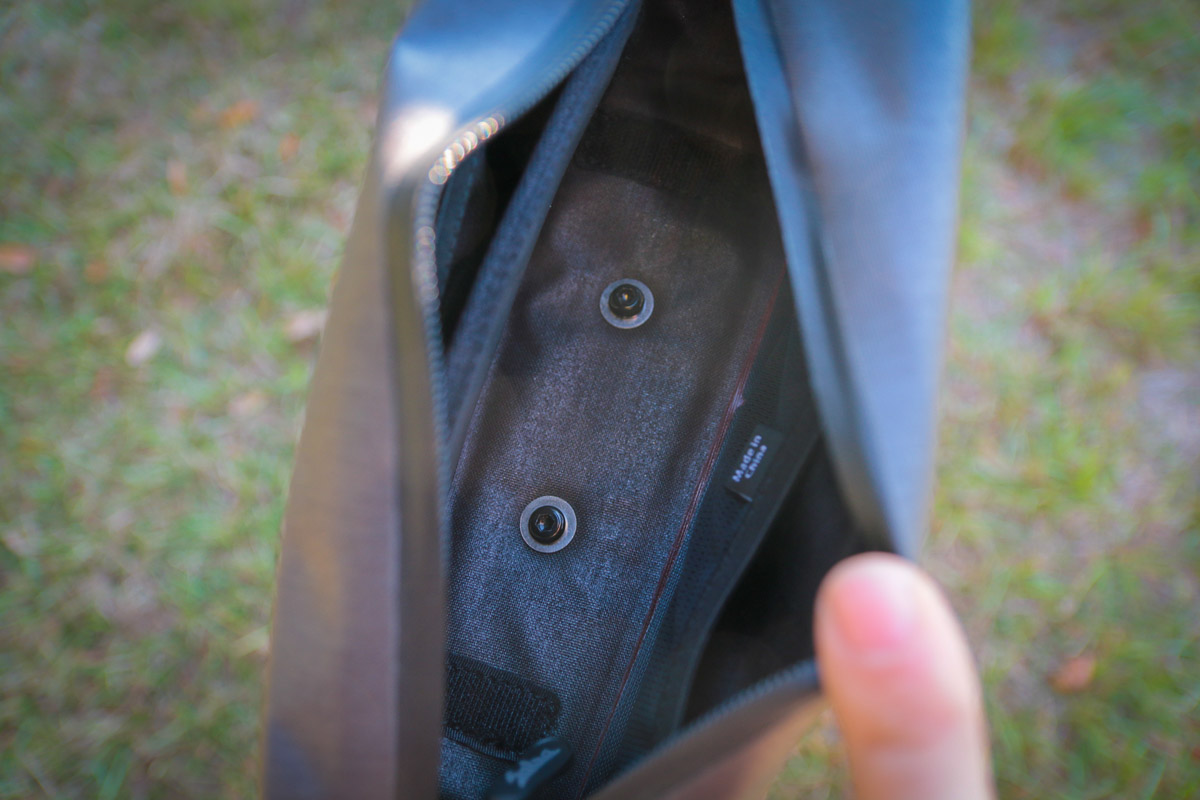
On that note, I’m honestly surprised at how much I liked having a top tube bag at all. Having a bag in front of you makes it easier to eat while riding, and it also makes for a great spot to stash your phone, a small pump, or other items you don’t want bouncing around in a jersey pocket.
However, I’ve determined that it is critical that a frame have the direct mount bolts on the top tube like the Lauf, for the bags to work. I’ve tried a number of “universal fit” top tube bags which attach with velcro straps but inevitably end up flapping around and generally annoying the shit out of you before you take them off and never install them again. The bolts are so clean, there’s no rubbing of the straps on the paint, and most importantly, the bag stays right where it’s supposed to – no matter what. If I was buying a gravel bike in the immediate future, this is definitely something I would look for.
For most of my riding, the above is exactly how it was set up. Two bottle cages, the Salsa EXP top tube bag, and the Silca Premio seat roll with an extra tube. With all of the needed tools, pump, tube, and extra room for food and a light jacket, it’s been really nice not having to stuff jersey pockets, even for long rides.
Frame Details
As far as the critical frame details go, the frame has the usual tapered head tube, internal ‘In-N-Out’ cable routing with fully guided tubes, and 12 x 142 and 15 x 100mm thru axles front and rear. Sticking with the tried and true, the frame runs a threaded BSA 68mm bottom bracket which should be a plus for many riders. Tire clearance is listed at 700c x 45mm which seems on the conservative side. I did however try to install a set of Schwalbe G-One Bite tires in a 650b x 54mm size on wider rims and there was no way. Smaller 650b tires on narrower rims may fit, but don’t count on it. Really though, you get a lot of grip out of the 700c x 40 Maxxis Ramblers on the bike with room to spare.
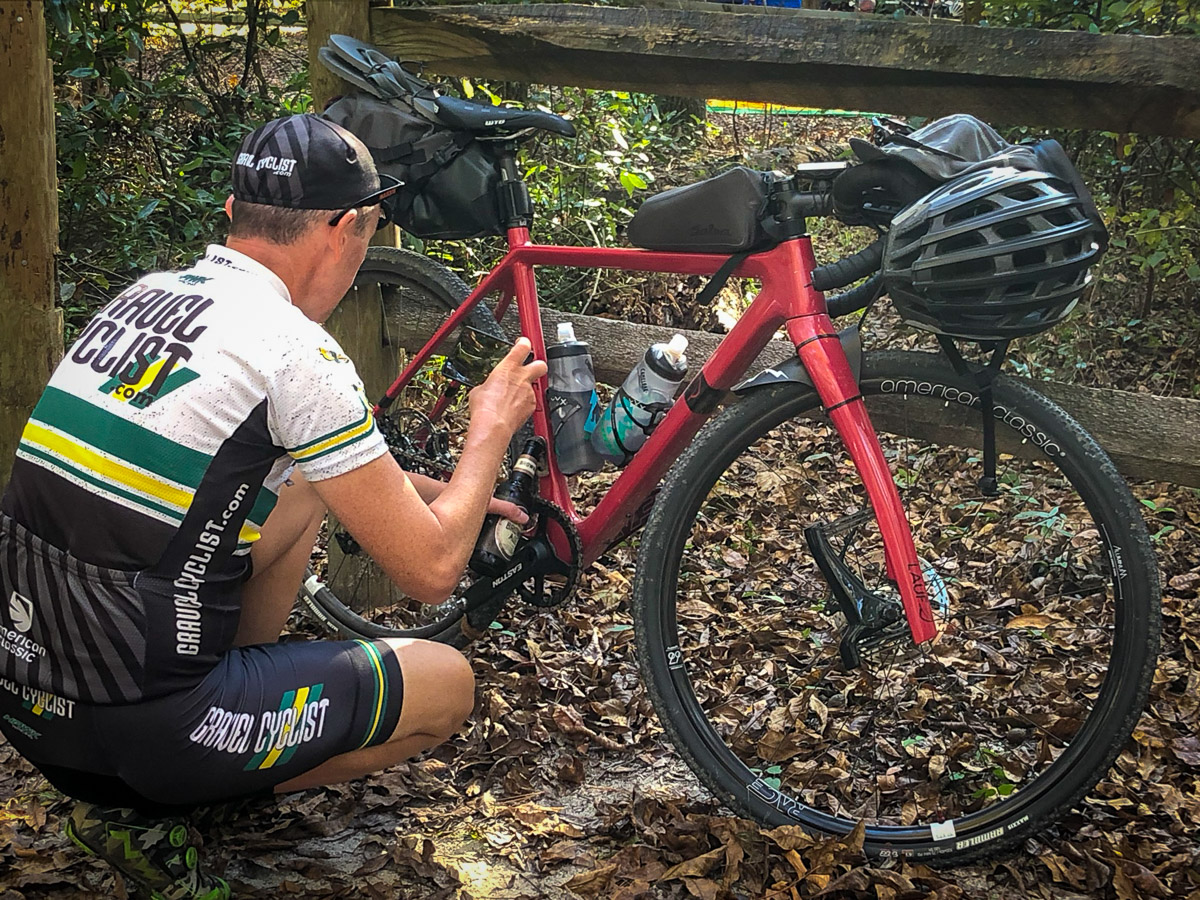
And while it may be a little cheesy, the Beer or Gear bottle opener turned out to be quite a hit at base camp once it was beer:30.
In terms of road or gravel bikes, the Lauf also has a fairly progressive geometry which they call “Long 4 Speed”. Like modern mountain bike geometries, the True Grit is based around shorter stems, a low head tube, and slack head tube angle for an aggressive yet stable position. It works. They also have two sub sizes of each main size, a short and a long. In my case I was on the Small-Long which turned out to be an excellent fit at 5’7″-ish.
Build, weight, and pricing
Weighing in at 17.1 lbs (7.76kg) with sealant in the tires for the Race Edition Small-Long, it’s hard to find fault in the spec. Especially at $4,990. Yes, that’s a lot of money. But this bike is on equal playing field as the Open U.P.P.E.R. which sells for $4,500 for the frameset alone ($3,200 for the Open U.P.). Yes, the U.P.P.E.R. is substantially lighter at 880g compared to the Lauf’s 1,070g frame, but the two compete on squarely on ride quality and only really differ on wheel choice options on the U.P.P.E.R. (650b tires on wide rims will not fit on the Lauf) and suspension.
And for just $490 more than the U.P.P.E.R., you’re getting a complete SRAM Force 1 drivetrain with hydraulic brakes, Easton EC90 SL cranks, an Easton bar and stem set up including the EC70 AX gravel bar, an FSA SLK seatpost, WTB Volt Pro saddle, American Classic Race wheels, Maxxis Rambler 700c x 40mm 120 TPI tubeless tires, and more. Long story short, the Race Edition is speced extremely well, and short of personal sizing or preferences, you won’t need to change a thing out of the box.
If that’s still too steep, you can pick up the Weekend Warrior edition for $3,690. Then there’s the Race Edition Wireless which bumps up to $6,590 for SRAM eTap and a 2×11 drivetrain. Finally, the frameset goes for $2,690.
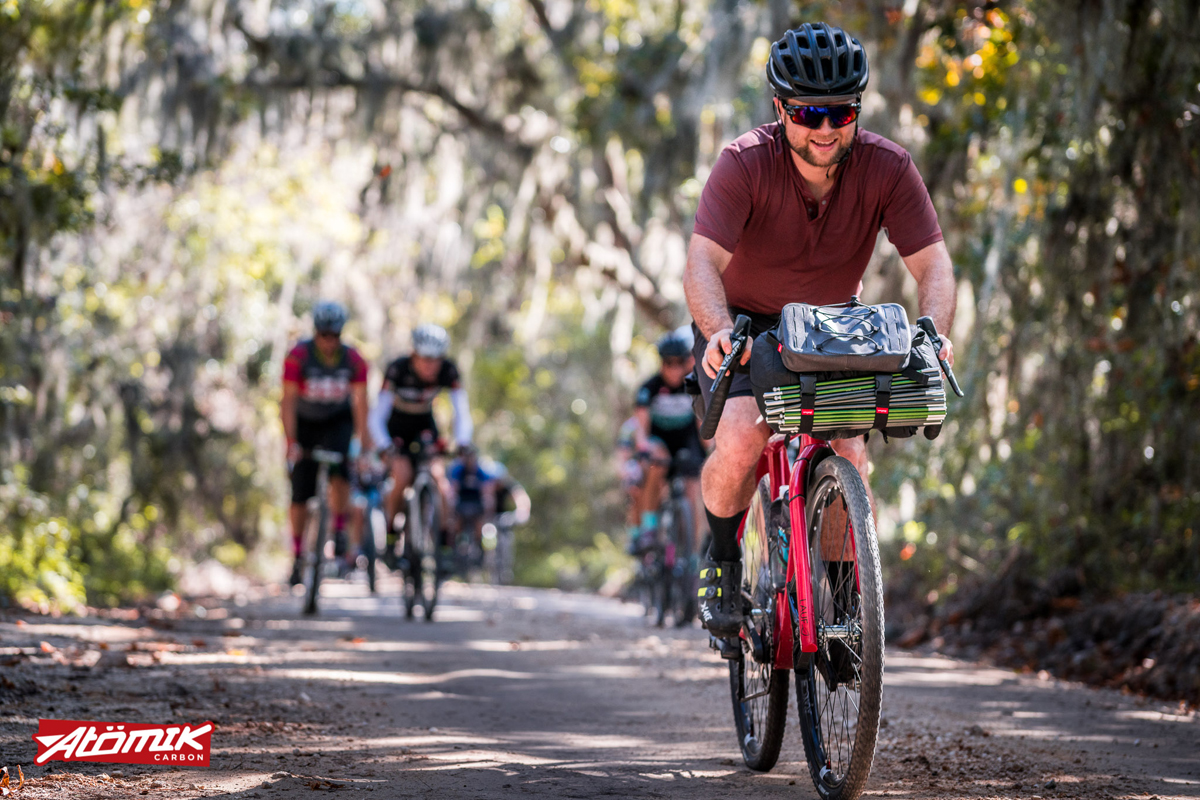
Takeaway
Somewhere along the line, to me, gravel bikes became far more exciting than traditional road bikes. With the way I preferred my road builds it was just a matter of time. Comfortable geometry, bigger tires, even 1x gearing – all of which have melted into what seems is the standard formula for a “gravel” bike. But to be fair, gravel bikes are useful for far more than just gravel. To me, the “all road” moniker is better suited to the category. I still find myself riding my favorite road routes, only this time they’re interspersed with sublime ribbons of single track that would have previously been omitted.
For that exact purpose, the True Grit is a stellar bike. If you know the Icelandic crew at Lauf you know that they will ride just about anything on almost any bike, and to me that is the spirit of the True Grit. You may end up in over your head when it comes to your own technical riding abilities, but somehow, the bike always seems composed no matter what the terrain. Comfortable on long road rides, and confident in the dirt, the True Grit seems to strike that perfect balance between on and off road abilities. Do all gravel riders need a bike with a suspension fork? No, I don’t think so. But I wouldn’t turn it down – especially if it’s part of this build.
